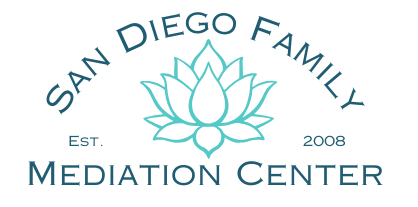What happens after you file for divorce? It’s a life-altering decision, and how you choose to navigate it can significantly impact your post-divorce life, especially if children are involved. In California, couples have the option to go through mediation instead of the traditional court route, which can offer a more amicable and collaborative way to finalize a divorce.
Learn more about what you can expect after filing for divorce in California and why mediation might be the best path for you and your family.

What Happens After Filing for Divorce in California
Once you’ve made the difficult decision to divorce and filed the necessary paperwork in California, the process begins. Unlike other states, California is a “no-fault” divorce state, meaning that the dissolution of marriage does not require proof of wrongdoing by either party. This sets a neutral stage for mediation.
The Divorce Mediation Process: A Step-by-Step Guide
- Choosing a Mediator: The first step is selecting a neutral third-party mediator. It’s crucial to pick a mediator experienced in family law and financial issues, especially if children are involved.
- Initial Meetings: Each participant and the mediator meet to outline the issues that need resolution, such as property division, child custody, and support.
- Negotiation Sessions: These are the heart of mediation, where both parties, guided by the mediator, discuss and negotiate each issue.
- Reaching an Agreement: Once both parties agree on the terms, the mediator drafts an agreement.
- Court Approval: The final step is submitting the agreement to the court for approval. Unlike traditional divorce court proceedings, this is typically straightforward and less contentious.
Why Divorce Mediation is Preferable, Especially for Couples with Children
- Children’s Well-Being: Mediation is less adversarial and more collaborative, fostering a healthier environment for children. Parents can focus on the best interests of their children, without the animosity often seen in court battles.
- Control and Flexibility: Couples have more control over the outcome in mediation. This autonomy allows for more tailored agreements that suit the unique needs of the family.
- Confidentiality: Unlike court proceedings, which are public, mediation is private, helping protect your family’s personal matters.
- Reduced Stress and Conflict: Mediation is typically less stressful than a court divorce. It encourages cooperation and communication, reducing conflict during and after the divorce process.
- Cost-Effectiveness: Generally, mediation is less expensive than going through the court due to shorter time frames and less litigation.
- Faster Resolution: Mediation can be completed in a shorter time compared to the traditional divorce process, allowing families to start their new lives sooner.
Divorce mediation in California offers a path that is less contentious, more collaborative, and generally better for the emotional and financial health of the family, especially when children are involved. While it’s not without its challenges, mediation provides a space for both parties to be heard and to reach a mutually beneficial agreement.
If you’re considering divorce in California, exploring mediation could be a decision that not only shapes your future but also protects the well-being of your entire family.
Wherever you are in California, contact San Diego Family Mediation Center for a free and confidential virtual divorce consultation.
by: Jennifer Segura, J.D., CDFA®






